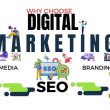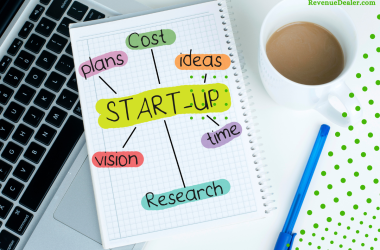Are you curious about the Saas business model and how it can help you grow your online presence? Are you looking for a way to increase revenue without investing in real-world products or services?
Then, the Revenue Dealer comprehensive guide to the Saas business model is precisely what you need! We’ll explain everything there is to know about this innovative way of doing business, from what the SaaS business model is. And how it works all the way to what software solutions are available that will make running your Saas easier.
So get comfortable – let’s dive right into learning more about the marvelous world of SaaS today!
Saas Business Model | An Overview

The Saas business model is an increasingly popular way to distribute software products. It gives the customer more freedom and flexibility than traditional methods, allowing them to receive software via a subscription with short-term commitments.
This model also makes software easier to scale and customize: you can upgrade or downgrade the number of users according to your needs at any time. In addition, many SaaS businesses offer “freemium” services, which give customers a free trial version of the product before deciding to commit long-term.
By offering this easy entry point, companies can increase their customer base and show potential customers the value of their product without requiring a significant initial investment. The Saas business model has quickly become one of the most successful software models in today’s digital economy.
How Does Saas Business Model Work?
The Software-as-a-Service (SaaS) business model is one of the most successful and popular ways for software companies to monetize their products. As mentioned above, In this model, businesses make their software available to customers on a subscription basis—often with multiple levels or tiers of service.
The basic idea behind the SaaS business model is that instead of buying an off-the-shelf product, customers can access hosted applications over the internet at a fraction of the cost.
To understand how such an arrangement works, let’s take a look at some key elements:
• Pricing – One of the primary benefits of SaaS models is that they generally offer low upfront costs and subscription pricing options. This allows users to pay only for what they use and helps to avoid significant upfront investments in technology.
Additionally, many services offer additional features or level upgrades as part of monthly fees made more palatable by paying them incrementally instead of all at once.
• Services – Unlike traditional projects, customers are responsible for everything after installation, including maintenance, updates, and support.
In Saas models, these responsibilities are often managed by the provider itself, leaving businesses free from hardware headaches while guaranteeing availability through expertly maintained data centers worldwide.
• Upgrades & Additions– As mentioned above, SaaS providers have found ways to meet customers’ needs through periodic updates, adding new functions without disrupting base services, leading to seamless experiences within modern web interfaces for experienced and novice users.
Like allowing teams across an organization to access shared data quickly when needed, regardless of whether it’s stored locally or remotely on cloud or hybrid systems.
• Security– With user security paramount in mind, providers continually update their services with cutting-edge technologies. The design explicitly safeguards user information, further reducing potential risks from outside attackers and ensuring everyone using their services can do so.
So safely knowing all potential risks associated have been reduced as much as possible now being monitored constantly 24/7, keeping hackers away while protecting valuable company secrets.
No matter where they’re accessed from worldwide, quickly done securely, lowering overhead associated with internal IT departments means more considerable savings going back into development budgets, helping companies expand faster than ever.
Before creating new opportunities through innovation, rapidly exploiting market shares ready to be capitalized upon ensuring long-term growth until they become fully operational cash cows providing income streams well into foreseeable futures.
Also Read:
How To Make Money On Traffic Arbitrage
Top 10 Digital Marketing Experts To Follow In 2023
Types Of SaaS Business Model
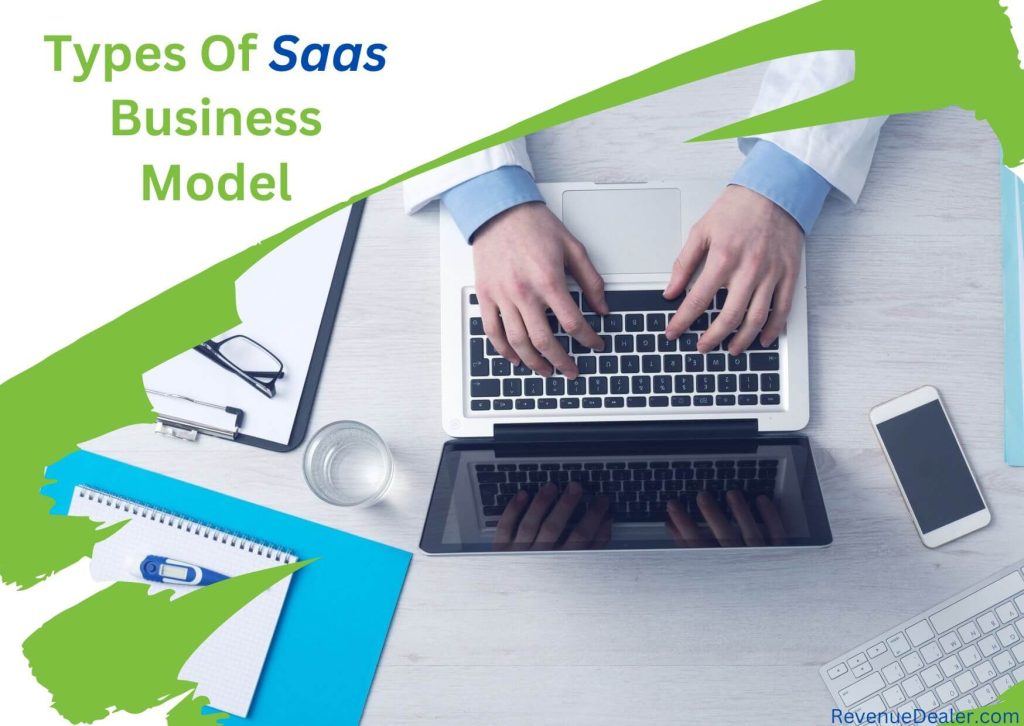
The Subscription Model
The subscription model is the most common type of SaaS business model. This model involves customers paying for access to a specific software application on an ongoing basis, usually monthly or annually.
Customers will have access to the application’s full functionality and can use it as long as they are subscribed. This allows companies to provide regular updates and improvements to their customers with no disruption in service.
The Pay-As-You-Go Model
The pay-as-you-go (PAYG) model is another popular type of SaaS business model. With this model, customers pay only for what they need when needed.
They can purchase additional capacity or features on an as-needed basis, which makes it ideal for businesses with fluctuating usage needs or those who want to try out a product before committing to a long-term subscription plan.
The Freemium Model
The freemium model is becoming increasingly popular in SaaS business models. With this model, customers get access to basic features for free but must pay for additional features or usage levels if they want them.
This allows companies to offer basic functionality without any upfront cost while monetizing their product by offering more advanced features as paid add-ons.
Also Read:
Revenue Share Model VS Profit Share Model
Revenue Sharing Model Agreement
Advantages Of SaaS Business Model Over Traditional Business Model
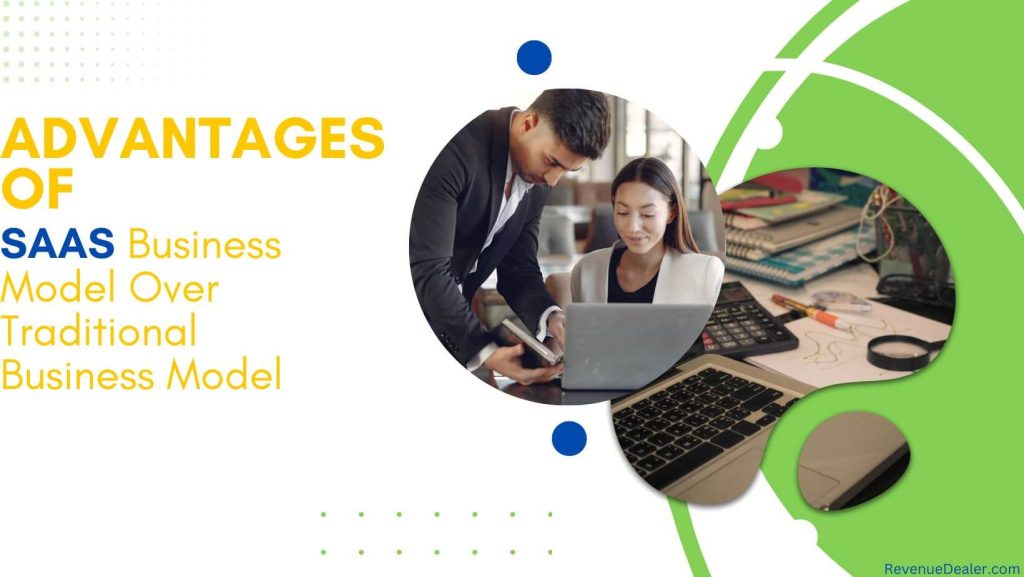
Now Let’s look at some of the advantages of SaaS that make it an excellent choice for any business.
Ease Of Setup And Use
Traditional software takes time and money to install and configure, which can be challenging to manage. However, with SaaS, setup and configuration are simple because everything is handled in the cloud.
All you need to do is sign up and start using it immediately! Additionally, SaaS applications are designed with user experience in mind, so they are easy to use, even for those who need to be tech-savvy.
Lower Cost
Traditional software requires an upfront cost, which can be expensive depending on your needs. With SaaS, you only pay for what you use monthly or yearly, making it much more affordable for businesses on tight budgets.
You also don’t need to worry about maintenance costs associated with traditional software because it’s all handled by your SaaS provider.
Continuous Updates
With traditional software, updates are released periodically as needed but require manual installation and configuration by an IT professional or someone with technical knowledge. On the other hand, updates for SaaS applications are released continuously without any effort from users—they happen automatically!
This ensures that you always have access to the latest features and security patches without worrying about manual updates or costly maintenance fees.
Customization Options
Many traditional software programs come with limited customization options due to the complexity and cost associated with making changes. However, most SaaS applications come with extensive customization options, so you can tailor them exactly how you need them without needing special coding knowledge or spending extra money on custom development services.
High Availability And Reliability
Traditional software often runs on local servers, which can be unreliable if they go down due to power outages or other issues beyond your control, with SaaS applications running in the cloud.
However, availability and reliability are much higher since cloud providers typically have multiple servers running in different locations that can keep your application online even if one server goes down temporarily due to maintenance or unexpected issues like natural disasters.
Disadvantages Of SaaS Business Model Over Traditional Business Model
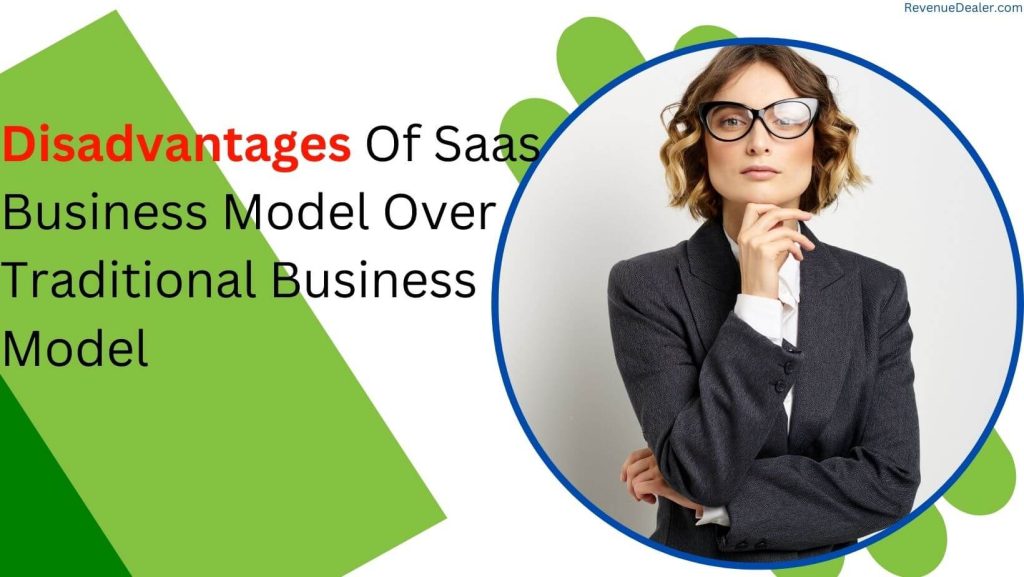
However, Software-as-a-Service (SaaS) business models offer more flexibility and scalability, allowing companies to move quickly in a digital world. But there are some downsides to SaaS that you should be aware of before making the switch. Let’s look at three disadvantages of SaaS business models over traditional ones.
Lack Of Control
With SaaS, you have less control over your software because a third-party provider hosts it. This means that you have no control over your software’s security, maintenance, or updates and must rely on the provider to take care of these tasks for you.
This lack of control is especially concerning if the provider suffers from outages or incidents that could affect your business operations.
Costly Upgrades
In many cases, upgrading to newer versions or changes within a SaaS platform can cost more than just one flat fee if using a traditional model. Some providers may charge per user or for specific features, which can add up quickly depending on your usage needs.
Additionally, some upgrades may require additional staff training, which can add extra costs to upgrade to new versions or features as needed.
Vendor Lock-In
A significant downside with SaaS is vendor lock-in, which occurs when a company cannot easily switch away from its current provider due to contractual obligations or technical limitations with its systems and data format.
This can be especially problematic if the provider suddenly shuts down operations or significantly raises prices since it is difficult for companies to make quick switches without some penalty in place by their provider.
Revenue Streams Of Saas Business
If you’re running a SaaS business, chances are you’re looking for ways to create multiple revenue streams. There are many options available today to help monetize your product or service.
Let’s look at five different revenue streams and how you can use them in your business.
Subscriptions
One of the most common and popular ways that SaaS companies make money is by charging customers a subscription fee on a monthly or yearly basis. This is great if you have an ongoing service or product that needs to be maintained and updated regularly. It also allows you to create predictable income each month.
Advertising
Another way that many SaaS businesses generate revenue is through advertising. You can either place ads directly on your website or blog or partner with other websites to display their ads on your site. This can be a great way to generate extra income without putting in too much effort.
Affiliate Marketing
Many SaaS businesses also use affiliate marketing programs as an additional source of income. With this model, you pay other people or organizations a commission when they refer customers to your product or service.
This can be an effective way of driving more traffic to your website and generating sales without doing any extra work beyond creating the program itself.
Upsells
Another popular way of generating revenue is through upselling related products and services once a customer has made an initial purchase from you.
For example, suppose someone buys one of your products. In that case, they may be interested in purchasing additional accessories or upgrades related to the product they just bought from you, resulting in additional sales for your business.
Freemium Model
Finally, some SaaS businesses use the freemium model to monetize their services and products.
Under this model, customers can access basic features for free while being able to upgrade to more advanced features if they choose to do so. This allows customers who may not be ready yet (or willing) to pay the total price for your services and still get some value out of it simultaneously – making it useful for both parties involved!
How Long Does It Take For A Saas Business To Be Profitable?
Starting a SaaS business can be daunting, but with plenty of determined planning and effort, it doesn’t have to take an eternity for a profitable return.
While the answer to how long it takes for a SaaS business to become profitable varies across businesses, plenty of successful companies have reported seeing returns usually ranging from two months to about two years.
While two years may seem like a long time, research suggests this timeline is manageable if taken strategically. Businesses should focus on building customer loyalty, reducing customer churn rates, and mitigating costs while they grow their customer base.
By tackling these elements head-on, many SaaS businesses have succeeded in much shorter periods than expected.
SaaS Business Model Growth Strategies

Now let’s discuss five strategies that can help you maximize growth within your SaaS business model.
Leverage Referrals
Referrals are one of the best ways to increase customer acquisition and retention. By offering incentives or discounts for referrals, such as free trials or discounts on future purchases, you can encourage existing customers to refer their friends and family members to your software.
Focus on Customer Engagement
Customer engagement is critical when it comes to growing your SaaS business model. Ensure you stay in touch with your customers by sending out regular emails or newsletters that keep them informed about new features and updates.
Additionally, ensure you offer quality customer support so that customers know they can count on you when they have questions or need help with your product or service.
Utilize Social Media Platforms
Social media platforms like Facebook, Twitter, and Instagram can be great tools for connecting with potential customers and engaging with existing ones. Use these platforms to share content about your product or service, highlight customer success stories, engage in conversations with followers, respond quickly to user queries and complaints, and more!
Develop Strategic Partnerships
Consider partnering with other businesses to reach a wider audience and gain access to valuable resources that could benefit your business growth efforts—such as access to new markets or an established customer base. This is also an excellent way for both parties to leverage each other’s strengths to achieve tremendous success.
Measure Your Results
Last but not least, make sure you measure the results of any strategies you implement to determine which ones are working best—and where there might be room for improvement—to maximize the effectiveness of future endeavors. Keep track of metrics like website visits, user engagement, and conversion rates to get an accurate picture of how well (or poorly) things are going with each strategy.
Bottom Line
To recap, the SaaS business model can help companies grow and expand in many different ways. It allows companies to focus on their core competencies while leveraging technology to maximize revenue opportunities.
With these key benefits, you should strive for a successful, hands-off approach when making decisions about your business services with the SaaS business model. The combination of venture capital funding and low cost of entry makes this type of software incredibly attractive.
Ultimately, whether you’re looking to increase your customer base or scale up your operations, the SaaS model is the perfect choice for entrepreneurs who want to see results quickly!



